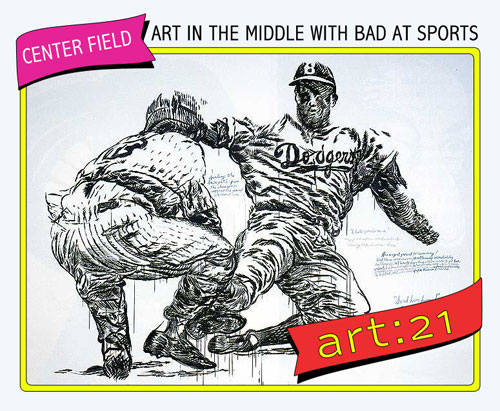
What do artists know? A few weeks ago, I spent an afternoon at the Chicago home of Frances Whitehead talking about the philosophical and pragmatic underpinnings of this question. To be sure, the notion that artists have a specialized knowledge — a quantifiable skill set of processes, methodologies, and approaches that they carry with them into the world — makes some people, even artists themselves, a little uncomfortable. But for Whitehead — a sculptor, gardener, professor (she has been on the faculty of The School of the Art Institute of Chicago since 1985), and self-identified “designist” (a linguistic mashup of the terms artist and designer) — it’s a liberating idea that has allowed her to situate her own practice within an expanded field of inquiry that engages sustainability, public works, and the future of design.
Whitehead is an enthusiastic proponent of the idea that an artist’s cognitive tool box is unique — and uniquely valuable — not just to “the art world” but to the world at large. To this end, she’s spent the better part of a decade researching, quantifying and articulating on both personal and professional, theoretical and pragmatic levels, the question of how artists can successfully engage practitioners in other fields in order to “get a seat at the table,” as she puts it. She’s come up with a document that she calls “What do Artists Know?” that she thinks of as “a knowledge claim.” It consists of a bullet-point list of specific “skills, processes and methodologies” that many contemporary artists possess, all of which were culled from observations made by Whitehead’s colleagues in design, planning, engineering, and other non-fine art fields over the years.
Whitehead’s home — a stunning, light-filled, 3,000 square foot home and studio dubbed The Green House — is one of the most ambitious mutli-disciplinary projects that Whitehead has tackled thus far. The house has garnered a lot of positive buzz in the architecture and design community (the New York Times wrote about it in 2008) due to its encyclopedic deployment of two decades’ worth of ethical mandates on sustainable design. Reclaimed from a brick warehouse on a plot of land that was once contaminated by an underground gas tank, the house is a model of sustainable technology, adaptive re-use, and affordable green design (it was begun in 2004 and completed in 2007 by the architecture firm James & Kutyla). It uses a geothermal heating and cooling system and two rotating wind turbines along with photovoltaic and thermal panels located on the roof — all of which provide the house with roughly 50% of its energy. Whitehead’s husband, the artist and clinical social worker James Elniski, keeps bees on the upper roof deck, and there are several other rooftop gardens that slow down storm water drainage and provide heat reduction (you can read further details on all of the home’s green features and technologies here and here). Whitehead played a lead role in the home’s design, pushing to incorporate as many sustainable technologies as possible and sourcing most of the materials locally. “We are modeling how people will live in the future,” she explains, adding that she and Elniski wanted to “get out of the ‘hippie model’ of what an alternative house could be.”
Designing the Green House expanded Whitehead’s commitment to sustainability issues on both personal and professional levels. Trained as a sculptor, she has always been interested in the intersection of art and science, but over the past decade she’s moved away from the modalities of art world institutions in favor of direct interactions with complex, living systems. Although she still thinks of herself as an artist, Whitehead now considers her work in terms of “redirective practice,” which Australian design guru Tony Fry defines as “any practice redirecting us away from the direction in which we, en mass, are currently traveling (increasing unsustainability) and toward the direction we need to go (the sustainable).” Redirective practice is interdisciplinary and, as Fry describes it, it is “a common practice to which cultural producers can subscribe and through which they share a collective intent that is able to be expressed by different means.”
Whitehead had her first taste of what this type of engagement could mean for her as an artist around 2000, when she participated in a pilot project sponsored by the National Endowment for the Arts Design Division. The NEA was placing artists on teams involved in government building projects. Whitehead’s team was working with the Office of Surface Mining in Murray City, Ohio, on a water pollution remediation project. Their directive was to design an Acid Mine Drainage (AMD) remediation system that could also function as a resource for community development and cultural enrichment. Working closely with a hydrologist from the area, Whitehead came up with a proposal for “radically multifunctional” skate bowl ponds. “It was a very, very complex project,” she recalls. It also fundamentally changed her approach to her own practice. “I went from depicting complexity to actually engaging the complexity of the real world. I’ve never (wanted) to go back to the other ever since.”
In 2005, with designer Lisa Norton, Whitehead developed SuperOrg in Cleveland, a project that involved coming up with concepts for the reclamation and revitalization of the Steelyard Commons area in the Cuyahoga River Valley. Their team had been asked to generate a master plan for a portion of a trail and greenway. Whitehead fixated on an enormous slag pile at the site, an area of visual blight about which many experts had concluded nothing could be done. Whitehead looked into the chemical makeup of the slag, and found that it could be “granulated” and used to make slag cement, which could then be sold locally.
Whitehead’s involvement in public works projects convinced her that she had something valuable to contribute to the growing discourse on urban sustainability and design. She wants to continue to work in the public sphere, but she isn’t interested in adding more “Plop art” to the universe. Several years ago Whitehead founded the Embedded Artist Project, which she now conducts in partnership with The School of the Art Institute and the City of Chicago. The goal of the program is to “embed” practicing artists into city government in order to “bring new perspectives, mindsets, and processes” to planning projects that revolve around the city’s future. Whitehead now works part time in the city’s Innovation Program, where she works in the Department of the Environment on the Brownfield Initiative alongside a team of planners, scientists, botanists, and other experts on a project called Slow Cleanup that involves using phytoremediation techniques to reclaim abandoned gas stations throughout the city.
Whitehead says she’s not sure if what she does now is art, or some new category that hasn’t quite been defined. “My question is, how do you change the culture, and what do artists know that can contribute to this [change]?” she said. By mapping out a knowledge claim for artists, Whitehead is re-framing long-held assumptions about what it means to be an artist while asking us to reconsider the notion that artistic practice is an inherently individualistic enterprise.
“Artists are modeling new potential roles, without any certainty,” Whitehead explained. “I don’t know what that looks like, I don’t know what that should be … but I can begin to ask questions. Maybe I am just becoming a designer, I don’t know, but … I believe that even when I do design, or landscape, or sustainability, or city planning, I do it differently than the people who were trained to do that, because I have a different knowledge, a different habitas than them. I’m redirecting art practice and it is a critical redirection, but critique is not the end in itself. The point is, as cultural workers, we try to move the culture to something more sustainable.”

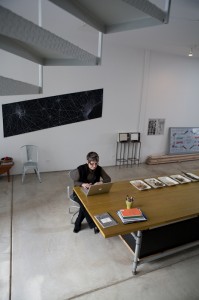
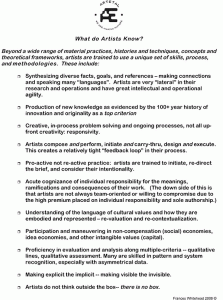
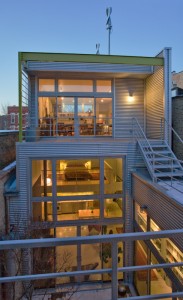

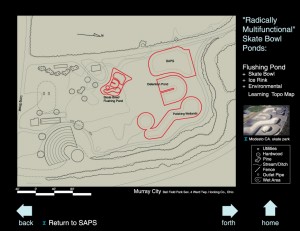
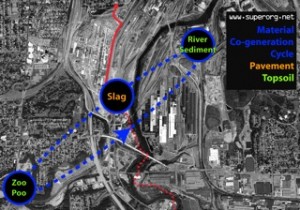
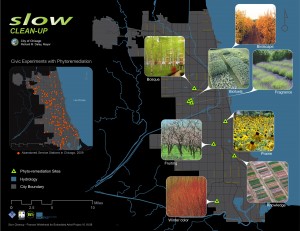
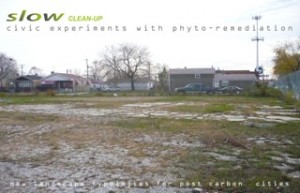



Pingback: Center Field | Frances Whitehead, Embedded Artist : Bad at Sports
Pingback: The Embedded Artist Project: Antennas Of The Race - PSFK
Pingback: ARTLab presents Frances Whitehead: Designist, embedded artist, environmentalist, futurist | NIU Today